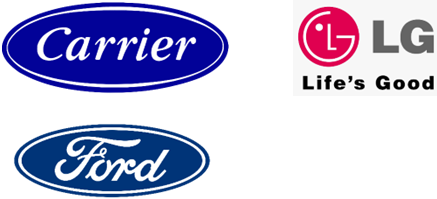Brand Strategy and Semiotics: Fuzzy Brand Image is Caused by Poor Semiotics
CS:  In the last conversation that we had, you had explained how cultural misalignment comes about for brands and advertising. And showed how having a semiotician on the team can help avoid many pitfalls. In this conversation, we move on to the next brand challenge, which is fuzzy brand image, with very little distinctiveness.
In the last conversation that we had, you had explained how cultural misalignment comes about for brands and advertising. And showed how having a semiotician on the team can help avoid many pitfalls. In this conversation, we move on to the next brand challenge, which is fuzzy brand image, with very little distinctiveness.
FT:  However, since brand strategy thinking is anchored in consumer perception, it approaches the issue from only one direction. As an ex-planner, now brand strategist and semiotician, I have understood that these are two sides to the coin. Issues of poor semiotics often manifest as perception issues.
However, since brand strategy thinking is anchored in consumer perception, it approaches the issue from only one direction. As an ex-planner, now brand strategist and semiotician, I have understood that these are two sides to the coin. Issues of poor semiotics often manifest as perception issues.
The consumer perception problem is an outcome, it is not the cause. The cause is often a problem of the signs and signification/meaning making as manifest in the brand’s identity or packaging or communication.
Fuzzy or confused brand perceptions is a result of poor semiotic coding of brands.
A holistic view of the sender-receiver interaction, of the inter-subjective space between the brand and the consumer, leads to deeper insight and more effective solutions. A one-sided perspective, either from the brand side or the consumer perception side is incomplete.
Brands are Senders. Brand semiotics are the signals that brands send out, to be interpreted by consumers.

Consumers are receivers & interpreters of brand signs. This shapes & forms their perceptions.
CS:  Could you explain with some examples so that the point you are making is clear?
Could you explain with some examples so that the point you are making is clear?
FT: Sure, I have identified three typical brand problems that are actually problems of semiotics. In this article, I will focus on the problem of brand distinctiveness. In subsequent articles, I will elaborate on the other problems.
Let’s go deeper into the challenge of creating brand distinctiveness:
A brand is a symbolic entity that lives among other brands within the category that it aspires to belong to. Thus, its distinctiveness needs to be created (from Identity onwards) within its reference set of brands.
Perceiving difference and similarity within any set of stimuli, is fundamental to human cognition and meaning making. Getting the reference set right in order to point consumers in the desired direction is the critical piece. If consumers don’t perceive adequate difference in the brand vs. other brands in the reference set, that’s because, the semiotics aren’t right. Or if consumers can perceive difference but are unable to make meaning out of the difference via accurate categorization into a reference set, that results in consumer confusion.
From a semiotic lens, these are principally, problems of classification and categorization based on the signs emanating from the leading products, services or packaging as physical embodiments of the brand.
CS:  Isn’t all this just branding 101. Even students of branding and marketing in MBA schools can get this right. I can’t believe that experienced marketers and brand strategy planners can go wrong.
Isn’t all this just branding 101. Even students of branding and marketing in MBA schools can get this right. I can’t believe that experienced marketers and brand strategy planners can go wrong.
FT:  While this is foundational to brand positioning and taught as the basics or 101 of marketing, many brands may not do a good enough job of it. It is not their inadequacy at work. Some categories have now become so immensely large and complex e.g. skincare, make up and haircare that creating brand distinctiveness for a new entrant requires a deep understanding of the semiotics.
While this is foundational to brand positioning and taught as the basics or 101 of marketing, many brands may not do a good enough job of it. It is not their inadequacy at work. Some categories have now become so immensely large and complex e.g. skincare, make up and haircare that creating brand distinctiveness for a new entrant requires a deep understanding of the semiotics.
It is not enough to go by consumer speak and consumers’ perceptions. Creative thinking in a workshop setting is exciting. That’s not enough. What you come up with may not be distinctive enough. Or there may be fusion-confusion in the search for distinctiveness. The sad thing is that failure in-market is a very costly affair, from which the brand may not be able to recover. Let’s look at a few examples.
a. Fuzzy brand identity which is not distinctive:
Carrier logo vs. LG logo in the air conditioning category

LG has a very distinctive brand identity due to its visual mnemonic. It has the letters LG but is also a man’s face. The pictogram can be read and interpreted in different ways. The promise of the brand is also written into the brand name. In comparison, the Carrier brand identity is not distinctive and bears closer resemblance to an American car brand than to brands in the Air conditioner category.
LG has done a much better job of defining the reference set of brands it belongs to and how it is distinctive within that set than has Carrier.
Just decoding the logos and brand identities indicates that LG will have sharper and clearer brand perceptions than Carrier in the air conditioning category.
b. Lack of brand distinctiveness in packaging:
When we compare packs in the chips category, Parle and Haldiram chips are copies / versions / variations of the classic Lays chips packs. While the reference set is clear, they are not distinctive.
In comparison, the Uncle Chips pack is much more distinctive due to its semiotics. The background colour blue (while not a food colour like red and yellow), is still different and stands out. The shade of indigo blue also has a lot of shelf-throw. The brand identity with the mnemonic of Uncle Chips is also distinct. Finally, their treatment of the wafer, with focus on quantity is also distinctive. Consumers are sensitive to the quantity of chips in a bag. This is also an offer pack, with 20% extra. The extra message is indicated in words and pictures. By highlighting the aspect that consumers are sensitive to, the pack becomes more attractive and distinctive.
Uncle Chipps as a brand is likely to have sharper and clearer brand perceptions than do Parle & Haldiram Chips.

c. Fusion-confusion: Distinctiveness that is confusing:
The Fruski pack at the time of launch (before) was certainly distinctive. But it was also confusing, because its reference set was extremely unclear. Where does the brand belong and what products should it be referenced against was fuzzy. Finally, the relaunch aligned the brand and product to the flavoured fruit drinks segment.

CS: So what do you propose as a solution to the problem of failure to create brand distinctiveness?
So what do you propose as a solution to the problem of failure to create brand distinctiveness?
FT: There are two ways with which to integrate Semiotics into the brand development process. The first is to commission a category mapping study which will provide the marketing, creative & design teams with the foundational understanding in a rigorous and structured way. Many a time, the Client teams are in too much of a hurry and are happy to rely on the experience of the design team to do the needful. In that case, the Semiotician team can carry out an assessment of the proposed identity, graphics, concept and visual design, including packaging and provide guidance on potential derailers vs. success factors in the design. We have worked with Clients in both ways – category mapping at the very beginning of the development process and assessments of the creations of design teams further down the line.
There are two ways with which to integrate Semiotics into the brand development process. The first is to commission a category mapping study which will provide the marketing, creative & design teams with the foundational understanding in a rigorous and structured way. Many a time, the Client teams are in too much of a hurry and are happy to rely on the experience of the design team to do the needful. In that case, the Semiotician team can carry out an assessment of the proposed identity, graphics, concept and visual design, including packaging and provide guidance on potential derailers vs. success factors in the design. We have worked with Clients in both ways – category mapping at the very beginning of the development process and assessments of the creations of design teams further down the line.
CS: OK, so here are my three takeaways and action points from this discussion with you.
OK, so here are my three takeaways and action points from this discussion with you.
- To achieve brand distinctiveness, we need to consider both the sender and receiver’s lens. From the Sender’s side, it is important to signal belonging (the reference set for comparison) and difference (how the brand is distinctive). From the Receiver’s side, the semiotics/signals shape perceptions in the intended direction.
- Many categories have become ultra-competitive with many different groupings of brands. So, where my brand belongs or could belong is not so easy to figure out. It helps to have a Semiotician in the team.
- Investing in semiotics is worth it, to avoid costly failures in market and subsequent brand redesign. It is a team effort however, in a triangular relationship between marketer/brand owner, semioticians and the design team.

